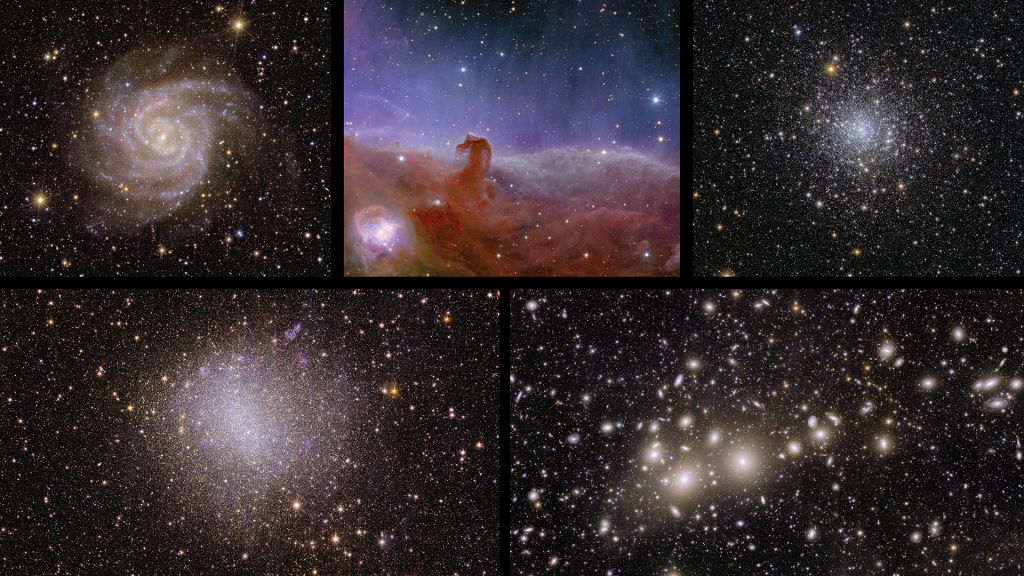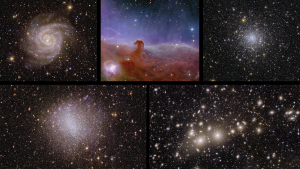This series of five images demonstrates the satellite’s exceptional performance for its cosmological mission!
To reveal the influence of the dark components of the Universe, over the next six years Euclid will be observing the shapes, distances and movements of billions of galaxies. This mapping will cover periods going back to the last 10 billion years of cosmic history, in order to gain a better understanding of where, when and how dark energy and matter – two key components of the universe that are still a mystery – act.
As a prelude to the mission, it was decided to illustrate the satellite’s scientific and instrumental capabilities through a series of images of the nearby Universe. Jean-Charles Cuillandre, an astronomer in CEA/IRFU’s astrophysics department, led this ‘ERO’ (Early Release Observations) campaign over several months, with a group of scientists from the Euclid collaboration and ESA, from the choice of the five astrophysical sources to image processing, from raw data to analysed images, combining the responses of the VIS (visible light) and NISP (near infrared) instruments.

The 5 images, released on Tuesday 7 November 2023, highlight the satellite’s exceptional capabilities:
- a large field of view, i.e. the ability to observe a large area of the sky in a single shot (the area of a Euclid field = 2.85 x area of the Moon!),
- and extraordinary measurement precision, capable of resolving individually bright stars in our galaxy and faint distant galaxies in the same image, obtained in just 1 hour of observation.
- You will be able to navigate through all 5 celestial objects in these ERO images, which will remain extremely sharp even when zoomed in on distant objects.
Beyond the science contained in these ERO images, the common thread running through them all is the more distant galaxies that Euclid will be collecting. They are everywhere, wherever we look, wherever we zoom in, we see very distant galaxies. The satellite must achieve 1% accuracy on the morphology of these distant galaxies. By mapping their distribution and shape, cosmologists will be able to learn more about how dark matter and dark energy have shaped the Universe we see today.
ESA news:
- ESA – Euclid’s first images: the dazzling edge of darkness
- ESA – Euclid’s view of irregular galaxy NGC 6822
- ESA – Euclid’s view of the Perseus cluster of galaxies
- ESA – Euclid’s view of the Horsehead Nebula
- ESA – Euclid’s view of globular cluster NGC 6397
Contacts Irfu/Dap : Jean-Charles CUILLANDRE, Marc SAUVAGE


